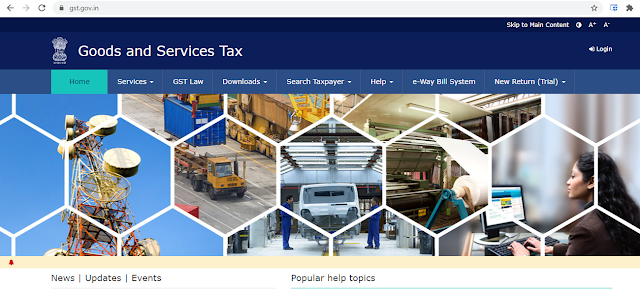
GST concept in India

GST stands for “Goods and Services Tax”, and is proposed to be a comprehensive indirect tax levy on manufacture, sale and consumption of goods as well as services at the national level. Its main objective is to consolidates all indirect tax levies into a single tax, except customs (excluding SAD) replacing multiple tax levies, overcoming the limitations of existing indirect tax structure, and creating efficiencies in tax administration.
Simply put, goods and services tax is a tax levied on goods and services imposed at each point of sale or rendering of service. Such GST could be on entire goods and services or there could be some exempted class of goods or services or a negative list of goods and services on which GST is not levied. GST is an indirect tax in lieu of tax on goods (excise) and tax on service (service tax). The GST is just like State level VAT which is levied as tax on sale of goods. GST will be a national level value added tax applicable on goods and services.
A major change in administering GST will be that the tax incidence is at the point of sale as against the present system of point of origin. According to the Task Force under the 13th Finance Commission, GST, as a well designed value added tax on all goods and services, is the most elegant method to eliminate distortions and to tax consumption.
One of the reasons to go the GST way is to facilitate seamless credit across the entire supply chain and across all States under a common tax base. It is a tax on goods and services, which will be levied at each point of sale or provision of service, in which at the time of sale of goods or providing the services the seller or service provider can claim the input credit of tax which he has paid while purchasing the goods or procuring the service. This is because they include GST in the price of the goods and services they sell and can claim credits for the most GST included in the price of goods and services they buy. The cost of GST is borne by the final consumer, who can’t claim GST credits, i.e. input credit of the tax paid.
Example: A product whose base price is ₹ 100 and after levying excise duty @ 12%value of the product is ₹ 112. On sale of such goods VAT is levied @ 12.5% and value to the ultimate consumer is ₹ 126. In the proposed GST system on base price of ₹ 100 CGST and SGST both will be charged, say @ 8% each, and then the value to the ultimate consumer is ₹ 116. So, in such a case the industry can better compete in global environment.
Therefore, GST is a broad based and a single comprehensive tax levied on goods and services consumed in an economy.
In particular, it would replace the following indirect taxes as these will be subsumed in the proposed GST:
At Central level
- Central Excise Duty
- Service Tax
- Additional Excise Duties
- CVD (levied on imports in lieu of Excise duty)
- SAD (levied on imports in lieu of VAT)
- Excise Duty levied on Medicinal and Toiletries preparations,
- Surcharges and cesses
- Central Sales Tax
At State level
- VAT/Sales tax
- Entertainment tax (unless it is levied by the local bodies
- Luxury Tax
- Taxes on lottery, betting and gambling
- Entry tax not in lieu of Octroi
- Cesses and Surcharges



